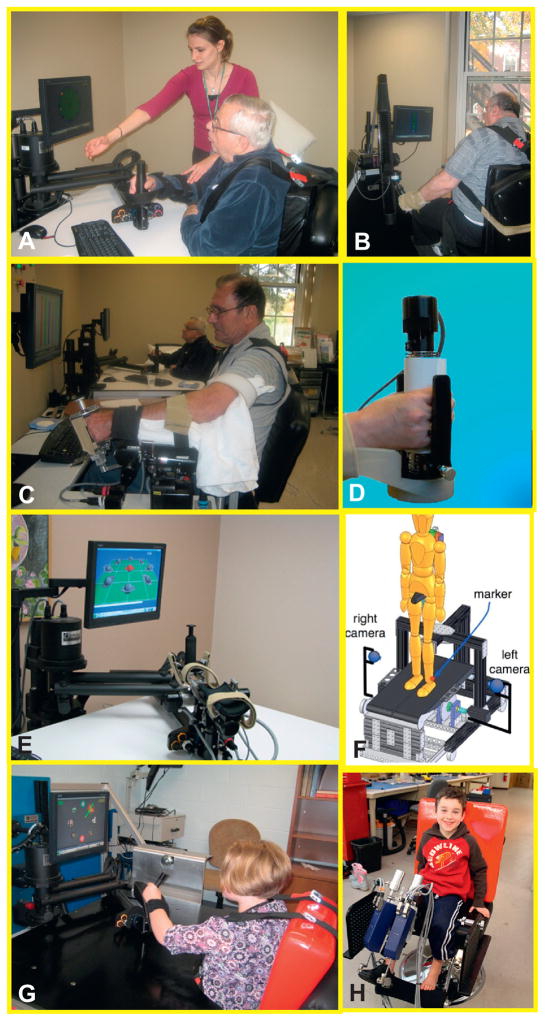Fig. 23.5.
MIT Gym of Robots (commercialized by Interactive Motion Technologies, Watertown, MA). (A) MIT-Manus to promote neurorecovery of the injured brain and control of the shoulder and elbow segments; (B) the antigravity to promote training of the shoulder against gravity. (C) The wrist robot which affords training of the 3 degrees of freedom of the wrist and forearm; (D) the hand module for grasp and release. (E) The combination of shoulder and elbow robot with the wrist module mounted at the tip of first affording training for both transport of arm and object manipulation; (F)a sketch of the alpha-prototype of the MIT-Skywalker for gait training. (G) Pediatric population working with the MIT-Manus and (H) our pediatric Anklebot that affords training in dorsi/plantarflexion and inversion/eversion.

